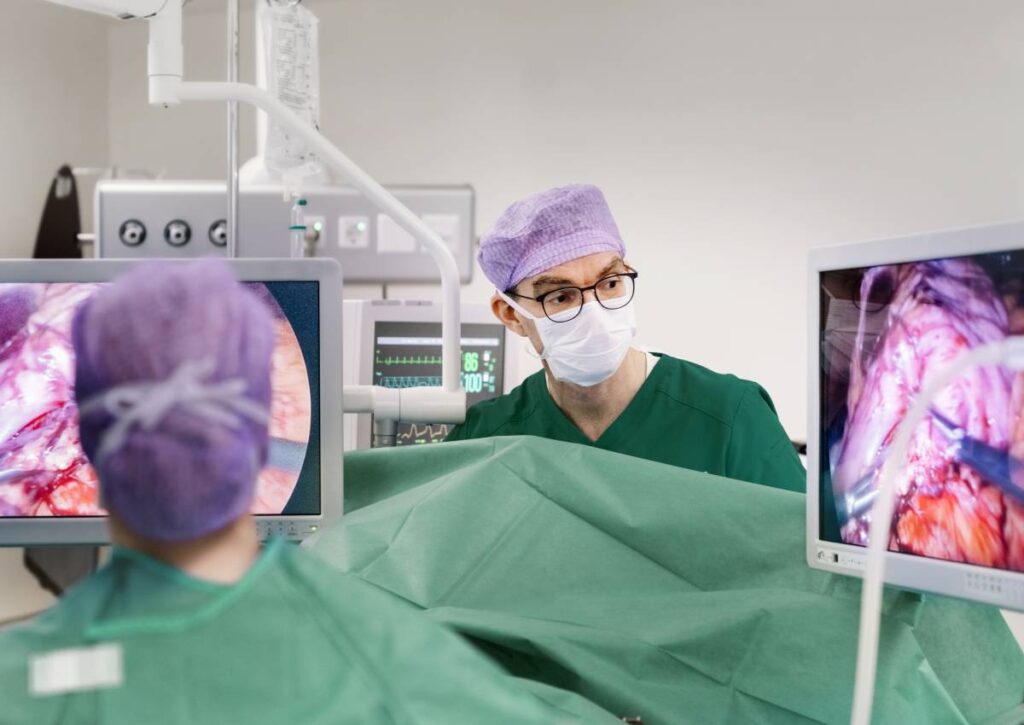Bariatric surgery rates have been increasing over the past decades, from 43.5 per 100,000 patients in 2006 to 70.6 per 10,000 in 2009.1 Although there is no specific anesthesia credentialing needed for bariatric surgery, current guidelines recommend the usage of a skilled anesthesiologist who has previous bariatric surgery experience and who is in close contact with the bariatric surgery program due to the specific risks that bariatric patients present.2 Bariatric surgery can have complicated anesthesia considerations due to the high risk of comorbidities such as obstructive sleep apnea, abnormalities of lung function, and difficulty establishing and maintaining a patent airway.
One of the most common comorbidities for obese patients is obstructive sleep apnea (OSA). Studies have suggested OSA is underdiagnosed in bariatric surgery patients, but it is not yet clear if mandatory diagnosis with polysomnography would yield clinical benefit.2 Currently, guidelines suggest that anesthesiologists maintain a high level of clinical suspicion of OSA during the preoperative evaluation. As a proxy for polysomnography, consider the patient’s history for any OSA signs such as daytime sleepiness, loud snoring or gasping at night, or interruptions of breathing while sleep. Also assess the patient’s gender, waist-to-hip ratio, and neck circumference. If the clinical suspicion for OSA is high, consider preoperative use of continuous positive airway pressure, which has been clinically proven to improve surgery outcomes by reducing cardiovascular changes caused by OSA. In a study with patients with OSA, CPAP for 12 weeks preoperatively improved hypoxia, reduced systemic blood pressure, and reduced pulmonary artery pressures during surgery.3
Another difficulty of anesthesia care of bariatric patients is their higher risk of abnormal lung function, especially in the supine position. Patients may have reductions in functional residual capacity, expiratory reserve volume, and total lung capacity caused by abdominal contents pushing on the diaphragm. These altered lung volumes can be exacerbated by the presence of weak respiratory muscles. Adding anesthesia to these respiratory limitations can further contribute to the ventilation/perfusion mismatch and altered gas exchange.2 These possible physiological outcomes are important to consider when altering ventilation during surgery and extubating after surgery.
Bariatric surgery patients can also present airways that are difficult to establish and maintain. Guidelines suggest planning for increased time during anesthesia induction as unexpected events can occur. Additionally, there are recommendations for positioning during intubation and preoxygenation. Using a head up position such as the “ramped” position or reverse Trendelenburg for tracheal intubation has been most successful in increasing non-hypoxic apnea duration.2 A head up position is also useful for preoxygenation. In a 2005 randomized controlled trial testing preoxygenation positions, 40 patients were assigned to the sitting or supine positions. They were preoxygenated and left apneic and disconnected from any assistance with ventilation until their SpO2 decreased to 90%. Patients in the sitting cohort had a significantly longer time to reach 90% than the supine group.4
These guidelines taken together represent a few important steps to planning for successful anesthesia in the bariatric patient in the preoperative assessment, operative, and extubation phases.
References
- Alalwan AA, Friedman J, Park H, Segal R, Brumback BA, Hartzema AG. US national trends in bariatric surgery: A decade of study. Surgery. 2021 Jul;170(1):13-17. doi: 10.1016/j.surg.2021.02.002. Epub 2021 Mar 11. PMID: 33714616.
- Benotti, P. N. (2014). Patient preparation for bariatric surgery. Springer New York.
- Arias MA, García-Río F, Alonso-Fernández A, Martínez I, Villamor J. Pulmonary hypertension in obstructive sleep apnoea: effects of continuous positive airway pressure: a randomized, controlled cross-over study. Eur Heart J. 2006 May;27(9):1106-13. doi: 10.1093/eurheartj/ehi807. Epub 2006 Feb 23. PMID: 16497687.
- Altermatt FR, Muñoz HR, Delfino AE, Cortínez LI. c. Br J Anaesth. 2005 Nov;95(5):706-9. doi: 10.1093/bja/aei231. Epub 2005 Sep 2. PMID: 16143575.



